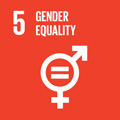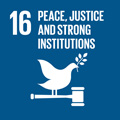- Docente: Mariachiara Russo
- SSD: L-LIN/07
- Language: Italian
- Teaching Mode: In-person learning (entirely or partially)
- Campus: Forli
- Corso: First cycle degree programme (L) in Intercultural and Linguistic Mediation (cod. 8059)
Learning outcomes
The student is able to use the basic strategies of dialogic interpretation in communicative situations that simulate real professional practice. S/he is able to adopt the principles of professional ethics
Course contents
The exercises of the DIALOGUE INTERPRETATION BETWEEN SPANISH AND ITALIAN I (SECOND LANGUAGE) course will be carried out in line with the contents of the respective reference course. The activities envisaged aim to deepen the linguistic, cultural and pragmatic knowledge for basic dialogic interpretation and to refine communicative competence in both Spanish and Italian.
Students will be asked to carry out exercises related to communicative situations typical of dialogic interpreting (both in an intra- and interlinguistic perspective), such as memorisation, reformulation, identification of key concepts, sight translation, management of register and terminology.
Particular attention will be paid to the documentation phase and to preparatory activities for dialogic interpreting (identification of lexical problems, finding parallel texts, management of lexical resources).
Readings/Bibliography
Recommended readings:
Briz, Antonio (2008). Saber hablar. Aguilar-Instituto Cervantes, Madrid.
Cirillo, L., Niemants, N. (eds.) (2017). Teaching Dialogue Interpreting. Research-based proposals for higher education. Amsterdam: John Benjamins.
Collados Aís, A., M. M. Fernández Sánchez (eds.) (2001). Manual de interpretación bilateral. Comares, Granada.
González Rodríguez, María Jesús (2006). "El ‘don de la ubicuidad' en la interpretación bilateral. Esbozo didáctico para emprender los primeros pasos", MediAzioni 2, no pag., http://www.mediazioni.sitlec.unibo.it/images/stories/PDF_folder/document-pdf/2006/articoli2006/1%20gonzlez%20rodrguez.pdf
González Rodríguez, María Jesús (2014). "La interpretación bilateral como disciplina de especialización: formación y perspectivas en investigación", Skopos Revista Internacional de Traducción 5, 59-76, https://www.uco.es/ucopress/ojs/index.php/skopos/issue/archive
Jiménez Ivars, A. (1999). “Descripción y clasificación de la traducción oral” en La traducción a la vista. Un análisis descriptivo (Tesis doctoral no publicada). http://www.tdx.cesca.es/TESIS_UJI/AVAILABLE/TDX-0519103-121513//jimenez-tdx.pdf [http://www.tdx.cesca.es/TESIS_UJI/AVAILABLE/TDX-0519103-121513/jimenez-tdx.pdf].
Russo, M., Mack, G. (2005). Interpretazione di trattativa. La mediazione linguistico-culturale nel contesto formativo e professionale. Milano: Hoepli.
Trovato, G. (2011). "La interpretación bilateral: algunas reflexiones metodológicas en torno a la combinación lingüística español-italiano", Reviste Electrónica de Didáctica del Español Lengua Extranjera 23, http://www.contrastiva.it/baul_contrastivo/dati/barbero/Trovato.pdf
Trovato, G. (2012). "El papel del intérprete en el ámbito ferial y de negocios: actividades y propuestas didácticas", Entreculturas 5, 75-91, http://www.entreculturas.uma.es/n5pdf/articulo04.pdf
Teaching methods
The teaching methods will follow the approach of the respective reference course DIALOGUE INTERPRETATION BETWEEN SPANISH AND ITALIAN I (SECOND LANGUAGE) and will be aimed at encouraging the maximum active participation of the students. In particular, improvised and/or script-based role-plays will be carried out, relating to a variety of communicative situations and of increasing difficulty.
Assessment methods
There is no assessment separate from the reference course, which involves a passive sight translation of a text of about 100 words and a simulation of a dialogic interpretation situation in an authentic context.
Teaching tools
Computer, video projector, Teams platform.
Teaching materials will be uploaded on the Moodle portal
Office hours
See the website of Mariachiara Russo
SDGs


This teaching activity contributes to the achievement of the Sustainable Development Goals of the UN 2030 Agenda.
